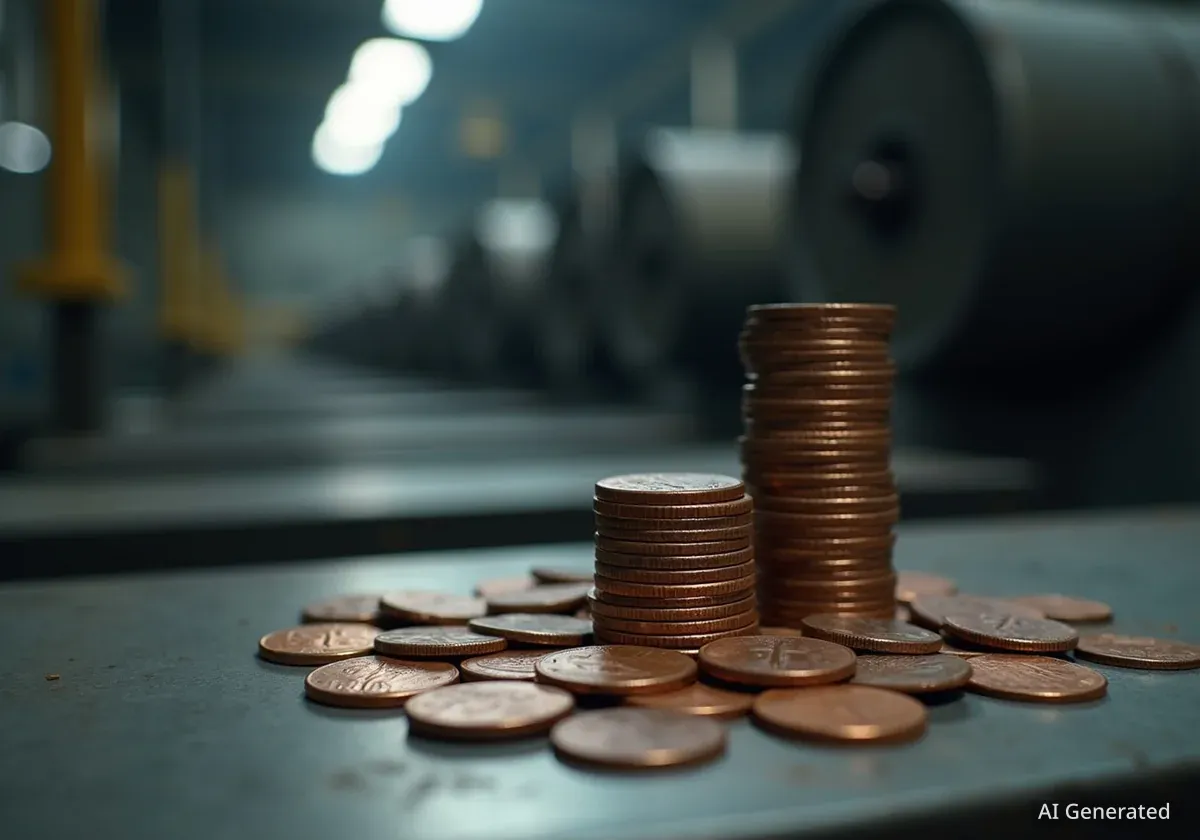Market history often provides a blueprint for future economic events, with past downturns offering valuable lessons for today's investors. An analysis of five major U.S. financial crashes—1907, 1929, 1987, 2008, and 2010—reveals recurring patterns of investor behavior, risky financial products, and regulatory gaps that consistently precede major market declines.
Understanding these historical precedents can help individuals identify warning signs and build more resilient financial strategies. By examining the common threads that connect these crises, investors can better navigate market volatility and avoid common pitfalls driven by euphoria and overconfidence.
Key Takeaways
- Major market crashes are often preceded by new, complex financial products that obscure underlying risks.
- A common pattern involves a period of intense market optimism, the widespread adoption of a flawed financial mechanism, and a sudden trigger event.
- Financial regulations are typically created in response to a crisis, meaning they often lag behind market innovation and fail to prevent the next downturn.
- During a market panic, liquidity can disappear rapidly, making it difficult to sell assets and highlighting the importance of holding cash reserves.
- Misaligned incentives, such as bonuses tied to transaction volume rather than quality, can encourage risky behavior that destabilizes the entire financial system.
1. New Financial Innovations Often Conceal Major Risks
A recurring theme in financial history is the role of novel financial instruments in fueling market bubbles. According to analysis in Scott Nation's book, “A History of the United States in Five Crashes,” these products often promise high returns or reduced risk, luring investors into a false sense of security.
In reality, their complexity can hide significant dangers that only become apparent when the market turns. This pattern has repeated itself for over a century, with each crisis featuring a different, yet conceptually similar, innovation.
Historical Examples of Risky Innovations
The Panic of 1907 was exacerbated by trust companies, which acted like banks but operated with far less regulatory oversight. When the 1906 San Francisco earthquake strained the financial system, a run on these trusts triggered a widespread collapse.
Decades later, the 1987 crash, known as Black Monday, saw a single-day market drop of 22.6%. A key factor was “portfolio insurance,” a computer-driven strategy using derivatives that was designed to limit losses but instead accelerated the sell-off as automated trades flooded the market.
The 2008 Global Financial Crisis
The 2008 crisis was driven by mortgage-backed securities (MBS) and credit default swaps (CDS). These instruments were marketed as a way to distribute risk, but they actually concentrated the danger from subprime home loans, leading to a global economic meltdown.
More recently, the 2010 “Flash Crash” demonstrated the risks of high-frequency algorithmic trading. Automated trading bots created a feedback loop that briefly erased nearly $1 trillion in market value in just a few minutes.
“The lesson for investors is to approach any revolutionary product with caution. It is crucial to scrutinize new strategies for hidden leverage and to prioritize transparent, diversified assets whose value is easy to understand.”
2. The Classic Pattern: Euphoria, a Flawed Vehicle, and a Spark
Major market downturns rarely happen without warning. They typically follow a predictable script: a period of widespread optimism pushes asset prices to unsustainable levels, a specific financial tool allows investors to take on excessive risk, and an unexpected event acts as the catalyst that brings the entire structure down.
This sequence begins with a euphoric rally, where investors believe that prices can only go up. This optimism encourages the adoption of a flawed financial vehicle, such as buying stocks on margin or using complex derivatives.
Understanding Leverage
Leverage, or using borrowed money to invest, is a common element in market crashes. While it amplifies gains during a bull market, it magnifies losses severely during a downturn, often forcing investors to sell at the worst possible time to cover their debts.
The 1929 stock market crash is a textbook example. Years of speculative frenzy were fueled by easy credit and widespread margin buying, which allowed people to borrow heavily to purchase stocks. The spark was a fraud scandal in London that revealed vulnerabilities in the global financial system, leading to panic selling and the onset of the Great Depression.
Similarly, the 2008 crisis followed a massive housing boom. The flawed vehicle was the belief that housing prices would never fall, combined with risky subprime mortgages. The catalyst was the eventual rise in mortgage defaults, which triggered a domino effect across the financial industry.
3. Regulation Is a Reactive Force, Not a Proactive Shield
While government regulations are intended to protect investors and maintain market stability, history shows they are almost always created in response to a disaster rather than in anticipation of one. Innovation in financial markets consistently outpaces the ability of regulators to keep up.
This creates a cycle where new risks emerge, cause a crisis, and only then do lawmakers and agencies step in to create new rules. For investors, this means it is unwise to assume that existing regulations will prevent the next crisis.
A Timeline of Reactive Regulation
- 1907 Panic: The lack of a central bank to stop the panic led to the creation of the Federal Reserve in 1913.
- 1929 Crash: The Fed's policy mistakes contributed to the bubble. In response, landmark legislation like the Glass-Steagall Act was passed to separate commercial and investment banking.
- 1987 Crash: The meltdown exposed weaknesses in electronic trading, prompting the introduction of “circuit breakers” to halt trading during extreme volatility.
- 2010 Flash Crash: The event showed that the circuit breakers from 1987 were insufficient to handle the speed of modern algorithmic trading, leading to further refinements.
Even in 2008, despite laws passed in the 1990s to curb predatory lending, regulators failed to act on clear warnings about the growing risks in the subprime mortgage market. This highlights the importance of personal due diligence. Investors should not outsource their risk management to government agencies.
4. Liquidity Vanishes When It Is Needed Most
One of the most dangerous features of a financial crisis is the sudden evaporation of liquidity. In normal times, it is easy to sell assets like stocks or bonds for cash. But during a panic, buyers disappear, and even supposedly “safe” assets can become difficult to sell without accepting a massive loss.
In the 1907 crisis, banks began hoarding cash, which froze the credit markets and forced businesses and individuals into fire sales to raise money. In 1929, margin calls required indebted investors to sell their stocks immediately, flooding the market with sell orders and causing prices to collapse further.
Modern technology has not solved this problem. The speed of digital trading can actually cause liquidity to vanish even faster, as seen in market drops in 2020. When algorithms pull bids simultaneously, the market can seize up in seconds.
For an individual investor, the best defense is a strong personal financial position. This includes:
- Reducing high-interest debt: This minimizes the risk of being forced to sell assets during a downturn, which often coincides with job losses.
- Maintaining an emergency fund: Experts recommend having six to 12 months of living expenses in highly liquid assets like cash, Treasury bills, or money market funds.
Personal liquidity provides stability and creates the opportunity to invest when others are forced to sell in panic.
5. Misaligned Incentives Drive Destructive Behavior
Ultimately, many financial crises are rooted in human behavior, particularly when incentives encourage short-term gains over long-term stability. When financial professionals are rewarded for taking excessive risks, the entire system becomes more fragile.
The 2008 crisis is a prime example of misaligned incentives. Mortgage brokers were paid for the volume of loans they originated, not their quality. Investment bankers earned huge bonuses for packaging these risky loans into securities. Meanwhile, credit rating agencies were paid by the same banks to give these securities top ratings.
This created a system where nearly every participant was incentivized to ignore the underlying risks. Homeowners were also encouraged to overborrow through loans that required no down payment.
As an investor, it is critical to identify and avoid situations where incentives are misaligned. This means questioning deals that seem too good to be true and favoring companies where executives have a significant personal stake in the long-term success of the business. By understanding these historical patterns, investors can develop a more disciplined and informed approach, turning potential fear into calculated opportunity.





